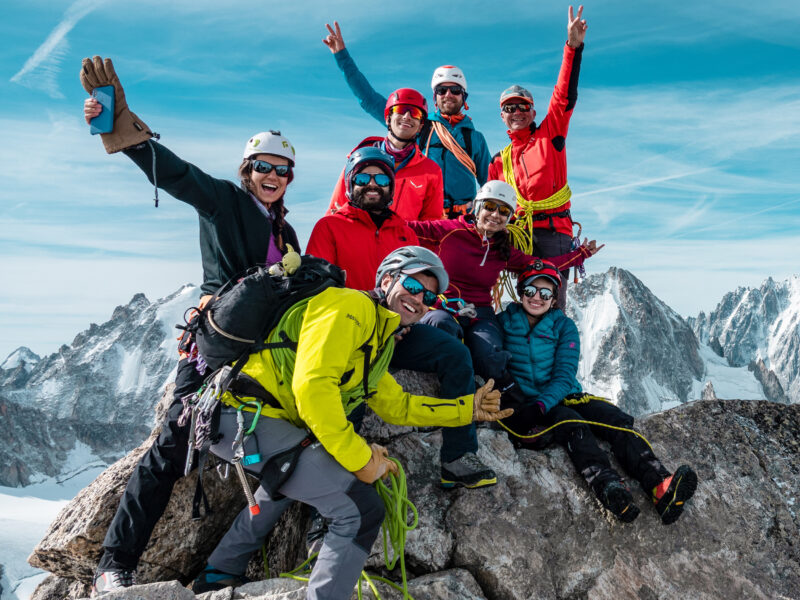BY Hazem El Shamy | May 28 2025
How Difficult is The Trek to Annapurna Base Camp?

If you’re asking yourself how hard the trek to Annapurna Base Camp really is, you’re probably already halfway to booking a flight to Nepal. And that’s a good thing—because this trek doesn’t require superhuman fitness or Himalayan heroics. But don’t mistake that for easy. Annapurna Base Camp (ABC) demands something different: consistency, mindset, and a willingness to get comfortable with the unpredictable rhythm of mountain life.
Here’s everything you need to know before you take the first step toward one of the most iconic treks in the world.
First, What Is the Annapurna Base Camp Trek?
ABC sits at 4,130 meters (13,550 feet) in the heart of Nepal’s Annapurna Sanctuary—a natural amphitheater of peaks that tower above 7,000 meters. The route winds through terraced farmlands, lush rhododendron forests, suspension bridges, and glacier-fed rivers before rising into a high alpine valley surrounded by giants like Machapuchare and Annapurna I.
The trail is typically a 7–12 day round trip from Pokhara, depending on your chosen itinerary, your pace, and your body’s response to altitude.
So… How Hard Is It?
Let’s break it down:
1. Physical Difficulty: Moderate
ABC isn’t Everest Base Camp. You won’t be gasping for air every five steps, but the elevation gain is still significant. The trek involves:
6–7 hours of hiking per day
Staircase-like ascents and descents (think thousands of stone steps)
Total elevation gain of ~3,000 meters (9,800 ft)
What makes it manageable is that the trail is non-technical. You don’t need crampons, ropes, or any climbing experience. If you’re relatively active—hiking, running, or doing regular cardio—a few weeks of specific training (especially stairs or uphill walking) can go a long way.
2. Altitude: Manageable, But Real
ABC’s max altitude is 4,130m—not high enough to require acclimatization days like Everest, but still high enough for altitude sickness to potentially hit. Go slow. Hydrate. Don’t underestimate how your body might respond.
Many itineraries naturally build in a gradual ascent, helping your body adjust as you go. Listen to your guide, and to your own body.
3. Trail Conditions: Varied but Clear
You’ll go from humid forests to snow-dusted ridgelines. Trails can be muddy, slippery, or covered in light snow depending on the season. That said, the paths are well-trodden and marked, and you’ll be staying in teahouses every night—no tents or hauling gear required.
Teahouses offer warm meals, basic beds, and hot showers (sometimes at a cost). They’re rustic, yes—but there’s magic in sipping ginger tea while watching the peaks glow at dawn.
The Real Challenge: The Mental Game
The ABC trek isn’t a race. It’s a rhythm. The hardest part isn’t the altitude or the steps—it’s staying present when your legs ache, when it rains for two days, or when you haven’t had cell signal in 48 hours.
This is the kind of trek where you meet yourself on the trail. You find your pace, lose the need to rush, and start noticing the small moments: a porter smiling in the mist, prayer flags dancing on a ridge, the way Annapurna lights up at sunrise.
It’s the kind of hard that stays with you—in the best way.
Who Is This Trek For?
First-time trekkers: Yes, this can be your first big trek.
Solo travelers: Very doable with or without a guide (though a guide enriches the experience).
Photographers & culture lovers: ABC is just as much about the journey as the destination.
If you can walk uphill for a few hours, day after day, and keep a good attitude through some discomfort, you can do this.
Final Thoughts: What You Gain from the Effort
The effort you put in on the Annapurna trail is repaid tenfold—in views, in connection, in stillness. This isn’t just a physical trek. It’s a mental shift, a lesson in simplicity, and a call to humility in the face of something far bigger than yourself.
So how hard is the trek to Annapurna Base Camp?
Hard enough to make you proud. Easy enough that you’ll wish it wasn’t over.
About The Author
Hazem is an avid high altitude mountaineer and adventurer that has helped lead hundreds of climbers to summits across the Himalayas, Andes, Atlas, and Caucus mountain ranges. He believes that inspiration is best served on a sharp ridge 6000 meters up in the sky, and is committed to making big mountain goals more achievable to the everyday climber.
About Life Happens Outdoors
At Life Happens Outdoors, we believe in the power of nature to transform lives. As proud members of the Adventure Travel Trade Association (ATTA) and the World Travel & Tourism Council (WTTC), our team of certified guides and outdoor professionals is committed to the highest standards of safety, sustainability, and excellence.
Discover more about our story and mission on our Meet LHO page, or explore our curated adventures such as the Tour du Mont Blanc Trek, the Climb of Kilimanjaro, and Chasing the Northern Lights.















